 |
FIG. 800– Posterior primary divisions of the upper three cervical nerves. (Testut.) |
|
(Rami Posteriores)
The posterior divisions are as a rule smaller than the anterior. They are directed backward, and, with the exceptions of those of the first cervical, the fourth and fifth sacral, and the coccygeal, divide into medial and lateral branches for the supply of the muscles and skin (Figs. 800, 801, 802) of the posterior part of the trunk. |
| |
| |
| The Cervical Nerves (Nn. Cervicales)—The posterior division of the first cervical or suboccipital nerve is larger than the anterior division, and emerges above the posterior arch of the atlas and beneath the vertebral artery. It enters the suboccipital triangle and supplies the muscles which bound this triangle, viz., the Rectus capitis posterior major, and the Obliqui superior and inferior; it gives branches also to the Rectus capitis posterior minor and the Semispinalis capitis. A filament from the branch to the Obliquus inferior joins the posterior division of the second cervical nerve. |
| The nerve occasionally gives off a cutaneous branch which accompanies the occipital artery to the scalp, and communicates with the greater and lesser occipital nerves. |
 |
FIG. 801– Diagram of the distribution of the cutaneous branches of the posterior divisions of the spinal nerves. |
| |
 |
FIG. 802– Areas of distribution of the cutaneous branches of the posterior divisions of the spinal nerves. The areas of the medial branches are in black, those of the lateral in red. (H. M. Johnston.) |
| |
| The posterior division of the second cervical nerve is much larger than the anterior division, and is the greatest of all the cervical posterior divisions. It emerges between the posterior arch of the atlas and the lamina of the axis, below the Obliquus inferior. It supplies a twig to this muscle, receives a communicating filament from the posterior division of the first cervical, and then divides into a large medial and a small lateral branch. |
| The medial branch (ramus medialis; internal branch), called from its size and distribution the greater occipital nerve (n. occipitalis major; great occipital nerve), ascends obliquely between the Obliquus inferior and the Semispinalis capitis, and pierces the latter muscle and the Trapezius near their attachments to the occipital bone (Fig. 801). It is then joined by a filament from the medial branch of the posterior division of the third cervical, and, ascending on the back of the head with the occipital artery, divides into branches which communicate with the lesser occipital nerve and supply the skin of the scalp as far forward as the vertex of the skull. It gives off muscular branches to the Semispinalis capitis, and occasionally a twig to the back of the auricula. The lateral branch (ramus lateralis; external branch) supplies filaments to the Splenius, Longus capitis, and Semispinalis capitis, and is often joined by the corresponding branch of the third cervical. |
| The posterior division of the third cervical is intermediate in size between those of the second and fourth. Its medial branch runs between the Semispinalis capitis and cervicis, and, piercing the Splenius and Trapezius, ends in the skin. While under the Trapezius it gives off a branch called the third occipital nerve, which pierces the Trapezius and ends in the skin of the lower part of the back of the head (Fig. 801). It lies medial to the greater occipital and communicates with it. The lateral branch often joins that of the second cervical. |
| The posterior division of the suboccipital, and the medial branches of the posterior division of the second and third cervical nerves are sometimes joined by communicating loops to form the posterior cervical plexus (Cruveilhier). |
| The posterior divisions of the lower five cervical nerves divide into medial and lateral branches. The medial branches of the fourth and fifth run between the Semispinales cervicis and capitis, and, having reached the spinous processes, pierce the Splenius and Trapezius to end in the skin (Fig. 801). Sometimes the branch of the fifth fails to reach the skin. Those of the lower three nerves are small, and end in the Semispinales cervicis and capitis, Multifidus, and Interspinales. The lateral branches of the lower five nerves supply the Iliocostalis cervicis, Longissimus cervicis, and Longissimus capitis. |
| |
| The Thoracic Nerves (Nn. Thoracales)—The medial branches (ramus medialis; internal branch) of the posterior divisions of the upper six thoracic nerves run between the Semispinalis dorsi and Multifidus, which they supply; they then pierce the Rhomboidei and Trapezius, and reach the skin by the sides of the spinous processes (Fig. 801). The medial branches of the lower six are distributed chiefly to the Multifidus and Longissimus dorsi, occasionally they give off filaments to the skin near the middle line. |
| The lateral branches (ramus lateralis; external branch) increase in size from above downward. They run through or beneath the Longissimus dorsi to the interval between it and the Iliocostales, and supply these muscles; the lower five or six also give off cutaneous branches which pierce the Serratus posterior inferior and Latissimus dorsi in a line with the angles of the ribs (Fig. 801). The lateral branches of a variable number of the upper thoracic nerves also give filaments to the skin. The lateral branch of the twelfth thoracic, after sending a filament medialward along the iliac crest, passes downward to the skin of the buttock. |
| The medial cutaneous branches of the posterior divisions of the thoracic nerves descend for some distance close to the spinous processes before reaching the skin, while the lateral branches travel downward for a considerable distance—it may be as much as the breadth of four ribs—before they become superficial; the branch from the twelfth thoracic, for instance, reaches the skin only a little way above the iliac crest. (*132 |
| |
| The Lumbar Nerves (Nn. Lumbales)—The medial branches of the posterior divisions of the lumbar nerves run close to the articular processes of the vertebræ and end in the Multifidus. |
| The lateral branches supply the Sacrospinalis. The upper three give off cutaneous nerves which pierce the aponeurosis of the Latissimus dorsi at the lateral border of the Sacrospinalis and descend across the posterior part of the iliac crest to the skin of the buttock (Fig. 801), some of their twigs running as far as the level of the greater trochanter. |
 |
FIG. 803– The posterior divisions of the sacral nerves. |
| |
| |
| The Sacral Nerves (Nn. Sacrales)—The posterior divisions of the sacral nerves (rami posteriores)(Fig. 803) are small, and diminish in size from above downward; they emerge, except the last, through the posterior sacral foramina. The upper three are covered at their points of exit by the Multifidus, and divide into medial and lateral branches. |
| The medial branches are small, and end in the Multifidus. |
| The lateral branches join with one another and with the lateral branches of the posterior divisions of the last lumbar and fourth sacral to form loops on the dorsal surface of the sacrum. From these loops branches run to the dorsal surface of the sacrotuberous ligament and form a second series of loops under the Glutæus maximus. From this second series cutaneous branches, two or three in number, pierce the Glutæus maximus along a line drawn from the posterior superior iliac spine to the tip of the coccyx; they supply the skin over the posterior part of the buttock. |
| The posterior divisions of the lower two sacral nerves are small and lie below the Multifidus. They do not divide into medial and lateral branches, but unite with each other and with the posterior division of the coccygeal nerve to form loops on the back of the sacrum; filaments from these loops supply the skin over the coccyx. |
| |
| The Coccygeal Nerve (N. Coccygeus)—The posterior division of the coccygeal nerve (ramus posterior) does not divide into a medial and a lateral branch, but receives, as already stated, a communicating branch from the last sacral; it is distributed to the skin over the back of the coccyx. |














 赞 · 4
赞 · 4  whipped333
whipped333  ytrangadrong
ytrangadrong  schmerzpain
schmerzpain  itsserinn
itsserinn  评论 ·
评论 · 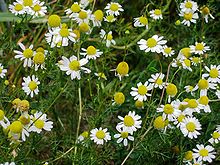




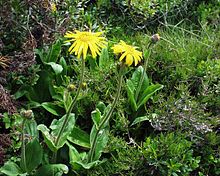

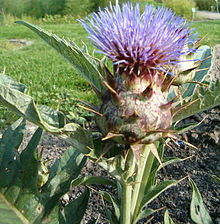

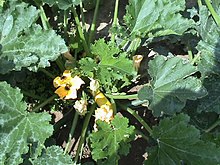




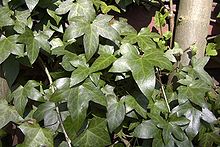
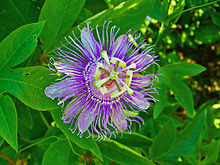




summerplum
healingwell
summerplum
drmom21
summerplum
drmom21
summerplum